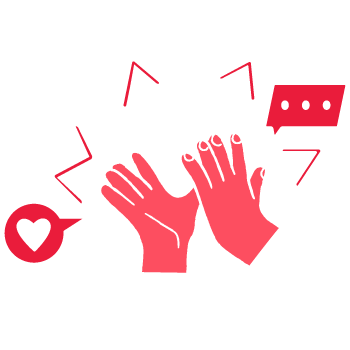Top 14 Best Marketing Animation Videos from Leading Global Brands in 2025

In 2025, animation has solidified its role as a cornerstone of digital marketing. With evolving visual trends, diverse platforms, and increasingly sophisticated audiences, animation is no longer just for entertainment—it’s a vital branding and storytelling tool. This year has seen a surge in Best Marketing Animation Videos, with global giants using the format to build emotional connections, boost engagement, and go viral. From animated commercials to explainer videos and social reels, top companies are redefining content strategy with creativity and clarity. Whether for awareness, conversions, or emotional branding, these videos stand as masterclasses in effective communication. This blog spotlights 14 of the Top Animated Ads by Global Brands in 2025, dissecting what makes them powerful and offering inspiration for your next campaign. Why Animation Works for Marketing in 2025 Animation is captivating, timeless, and versatile. As audiences become more mobile-centric and attention spans shrink, animation delivers messages fast, memorably, and with style. Let’s explore why animation is now a top-tier choice for brand storytelling: No surprise then that the Best Animation Videos for Marketing are now at the center of high-performing digital strategies. Top 14 Best Marketing Animation Videos from Leading Global Brands Let’s explore examples of Successful Animated Marketing Campaigns from brands that mastered creativity, narrative, and design in 2025. 1. Apple – Privacy Unboxed Apple created a beautifully stylized 2D animation to explain its privacy features. With clean, flat illustrations and playful transitions, it kept viewers entertained while demystifying complex tech topics. ✅ Why it works: Simplifies technical features and supports brand transparency. Category: Best Marketing Animation Videos 2. Nike – Air Redefined Nike’s 3D animated spot showcased the evolution of the Air Max sneaker line with morphing footwear across decades. The campaign combined nostalgic colors with futuristic design. ✅ Why it works: Appeals to both long-time fans and Gen Z with a perfect blend of storytelling and innovation. Category: Top Animated Ads by Global Brands 3. Google – Search Beyond Words This animated campaign by Google highlighted voice search and visual search capabilities. A mix of real-time data visualization and animated characters brought this feature to life. ✅ Why it works: Turns abstract technology into relatable, everyday benefits. Category: Brand Promotion with Animation 4. Coca-Cola – Magic in Every Drop Coca-Cola launched an animated holiday ad campaign featuring magical bubbles from every bottle. The campaign tied in nostalgia, kindness, and storytelling through Pixar-style visuals. ✅ Why it works: Emotionally resonant and visually enchanting. Category: Successful Animated Marketing Campaigns 5. Spotify – Wrapped 2025 Spotify used motion graphics and vibrant animation to visualize individual user data in their Wrapped campaign. Custom animations for top genres, moods, and artists. ✅ Why it works: Data-driven personalization with slick animation keeps users engaged. Category: Marketing Strategies with Animation 6. Samsung – The Foldable Story To market their new foldable phone, Samsung launched a fully animated story showing how flexible screens can change lives. A single character navigated challenges through a foldable device. ✅ Why it works: Combines product benefits with character-driven storytelling. Category: Best Animation Videos for Marketing 7. McDonald’s – McDelivery Nights This cozy animated ad played on late-night cravings with a warm, illustrative 2D style. It used a recurring animated character in multiple mini-stories across platforms. ✅ Why it works: Builds brand warmth and relatability with continuity. Category: Leading Brands Using Animation 8. Adobe – Creativity for All Adobe’s campaign featured rapid-style character animations showing everyday creators turning ideas into visuals using Adobe Express. It embraced diversity, fast transitions, and trendy music. ✅ Why it works: Speaks directly to their target market: fast-paced, digital-native creatives. Category: Top Animated Ads by Global Brands 9. Tesla – AI Explained Tesla launched a visually engaging explainer-style animation showing how its self-driving technology works. Using futuristic UI graphics and motion design. ✅ Why it works: Breaks down complexity with futuristic, brand-aligned visuals. Category: Brand Promotion with Animation 10. Airbnb – Belong Anywhere 2.0 Airbnb reimagined its core brand promise with story-driven, animated tales of travelers across the globe. Soft palettes and hand-drawn elements created a cozy feel. ✅ Why it works: Touches on emotional storytelling while reinforcing global accessibility. Category: Successful Animated Marketing Campaigns 11. LEGO – Build Your World LEGO’s animation campaign lets kids and adults alike watch ideas materialize into LEGO builds using magical 3D animation. Hyper-realistic and fast-paced. ✅ Why it works: Sparks imagination while staying product-centric. Category: Animated Commercials That Went Viral 12. Amazon – Alexa’s Universe Amazon unveiled a cosmic-themed animation that visualized Alexa’s expanding skills in a sci-fi cartoon style. Planets, satellites, and alien voice assistants filled the screen. ✅ Why it works: Reinforces innovation while making tech fun and less intimidating. Category: Best Marketing Animation Videos 13. Duolingo – Learn with Duo The Duo owl got a makeover in 2025 with short-form animated skits that were meme-ready and humorous. These animations went viral across TikTok and Instagram. ✅ Why it works: Entertaining, platform-optimized, and perfect for Gen Z humor. Category: Animated Commercials That Went Viral 14. Microsoft – AI at Work Microsoft combined animation with kinetic typography and infographics to explain their workplace AI tools. Sleek, business-centric, and highly shareable. ✅ Why it works: Brings technical clarity to B2B audiences with minimal fuss. Category: Marketing Strategies with Animation Common Traits of Successful Animated Marketing Campaigns What do these winning examples have in common? 🔸 Brand Alignment The animation style reflects the brand’s tone, industry, and values. 🔸 Emotion + Logic They combine emotional storytelling with product education. 🔸 Cross-Platform Optimization Each campaign includes multiple formats for various platforms (Reels, YouTube, Stories, etc.). 🔸 Shareability These videos use humor, relatability, or surprise to boost shares. These commonalities explain why they’re considered Top Animated Ads by Global Brands. How to Create Your Own Best Animation Videos for Marketing Inspired? You can craft a campaign worthy of this list too. Here are tips for success: ✅ Know Your Audience Craft personas to guide your messaging tone and animation style. ✅ Choose the Right Format Explainer, product demo, emotional
Shape Language Technique in Character Design: What, Why, and How
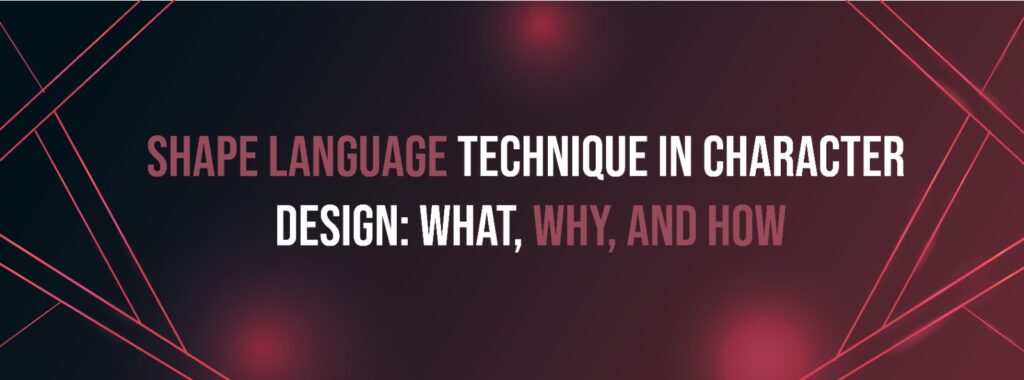
In 2025, character design continues to be at the core of storytelling in animation, gaming, branding, and digital illustration. But what truly makes a character visually striking and emotionally resonant? It often comes down to one crucial design principle: Shape Language in Character Design. This blog dives into the science and creativity behind using shape language effectively. From the Fundamentals of Shape Language to exploring Character Design Shape Psychology, we’ll guide you through the how, why, and what of using this technique to elevate your work. Whether you’re an aspiring artist or a professional designer, understanding the Impact of Shapes on Character Design is essential to creating compelling, memorable characters in 2025. What Is Shape Language in Character Design? Shape Language refers to the use of specific geometric shapes to communicate personality traits, emotions, or narrative roles within a character’s visual design. These shapes form the visual vocabulary of your character and help audiences instantly understand who they are before they say a word. The Three Core Shape Categories: When you look at famous animated characters, you’ll notice these shapes guide their forms. Think of Mickey Mouse (circles), Superman (squares), or Maleficent (triangles). Using Shape Language in Character Design gives your visuals intentionality. It helps create intuitive, readable designs that connect with audiences instantly. Why Shape Language Matters in 2025 As character design becomes more integrated into virtual reality, interactive content, and diverse cultural storytelling, subtle cues like shape become vital for accessibility and emotional resonance. Key Reasons to Use Shape Language: In the competitive and immersive digital landscape of 2025, the power of shape to deliver meaning faster than text or voice is unparalleled. Character Design Shape Psychology: What Shapes Represent Understanding Character Design Shape Psychology allows artists to make informed choices based on the message they want to convey. 🔵 Circles: 🟫 Squares: 🔺 Triangles: Knowing this helps you shape characters to fit the roles they’re meant to play. How to Use Shape Language in Art Applying Shape Language in Character Design isn’t just about drawing shapes—it’s about building a cohesive language across all parts of a character. Where to Apply Shape Language: Example Process: Fundamentals of Shape Language: The Design Building Blocks Let’s go deeper into the Fundamentals of Shape Language to help you build a stronger foundation in your design work. 1. Visual Simplicity Shapes should be clear and readable even at small sizes. This helps in branding, app icons, and animation readability. 2. Contrast for Character Dynamics Opposites attract! A triangle villain clashing with a circle hero can visually reinforce conflict. 3. Shape Combinations Characters can mix shapes to represent duality or development. A circle-head with a square body could suggest a kind soul with a strong foundation. 4. Scale and Proportion Exaggerate certain parts to amplify the character’s traits—like large round eyes for innocence or broad square shoulders for power. Mastering these principles allows you to craft characters that not only look great but feel intentional. Character Design Techniques and Tips for 2025 Here are fresh tips tailored for the current tools and trends of 2025: ✅ Use AI-Assisted Sketching AI tools like Adobe Firefly or Character.ai can generate shape-based character roughs. These help speed up exploration. ✅ Design for Multiple Platforms Make sure your character’s shape reads well in 3D, AR, and flat 2D assets. ✅ Create a Shape Language Chart Before designing, make a reference sheet with shape-based traits to align your team. ✅ Emphasize in Storyboards Use shape contrast in storyboards to highlight character dynamics visually. These modern Character Design Techniques and Tips will help keep your designs sharp and relevant. Best Shape Language Examples in Animation Nothing teaches better than observing the pros. Let’s look at Best Shape Language Examples in Animation that demonstrate mastery. 🔹 Pixar’s Inside Out Each emotion is designed with different shapes: Joy is a starburst of circles, Anger is a short square block, Fear is a tall, thin triangle. 🔹 DreamWorks’ Kung Fu Panda Po is entirely made of rounded forms, communicating his gentle, goofy nature. Tai Lung, the antagonist, features angular designs to show tension and danger. 🔹 Disney’s The Incredibles Mr. Incredible’s boxy design contrasts Elastigirl’s more flexible, rounded design—visually expressing their personalities and powers. 🔹 Arcane (Netflix) The show masterfully uses angular, gritty designs for villains and organic, smooth curves for protagonists—each matching character development. These examples reinforce how Using Shape Theory for Better Characters creates iconic storytelling. Using Shape Theory for Better Characters Shape theory isn’t a rigid rule—it’s a tool. Combining shapes allows you to show character growth, internal conflict, or duality. Multi-Shape Characters: Tips: This strategic combination strengthens psychological depth in design. Integrating Shape Language in Team Projects In large animation or game studios, consistency is key. Here’s how to apply shape language across teams: 📘 Create a Shape Style Guide Include base shape templates, psychological associations, and approved combinations. 🎨 Use Modular Asset Libraries Group costume parts, props, and face elements by shape category. 🤝 Collaborate with Animators Early Ensure movement complements the design—sharp shapes should move fast and aggressively, soft ones with bounce or sway. Collaboration enhances the Impact of Shapes on Character Design across the full pipeline. The Future of Shape Language in Character Design (2025 and Beyond) 🔮 Predictive Tools AI-driven design assistants that suggest shape combinations based on character briefs. 🔮 Responsive Design Characters that shift shape subtly based on emotional state—perfect for games and VR. 🔮 Cross-Cultural Shape Psychology As global content rises, designers explore how different cultures interpret shape symbolism. By staying ahead of these trends, your mastery of Shape Language in Character Design will remain timeless and future-ready. Final Thoughts In 2025, Shape Language in Character Design remains one of the most impactful tools in any visual storyteller’s toolkit. It’s not just about what looks cool—it’s about what communicates clearly, emotionally, and universally. Understanding Character Design Shape Psychology enables you to speak to your audience before a single word is spoken. Whether through soft circles, grounded squares, or edgy triangles,
8 Best Ways to Create Stunning Textures for 3D Models (Step by Step) in 2025
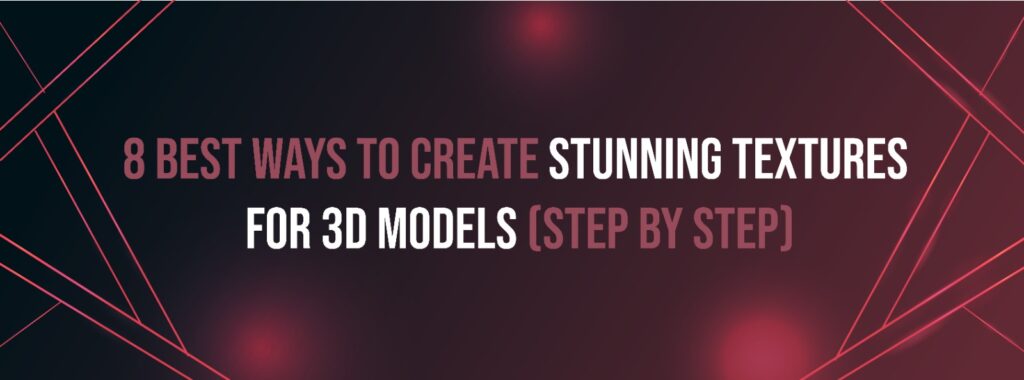
Whether you’re designing characters for games, assets for film, or immersive environments in AR/VR, your model is only as good as the surface it wears. A well-modeled character with poor texturing will never truly come to life. That’s why mastering the art of creating high-quality textures is a crucial step in 3D modeling. In this detailed guide, we’ll explore the 8 best ways to create stunning textures for 3D models in 2025. You’ll get a step-by-step guide to 3D model texturing, learn about top software for 3D texturing in 2025, and explore the best tools for creating 3D textures that match professional standards. We’ll also help you understand: Let’s dive into the texturing workflow and the tools you’ll need to produce professional-grade results. 1. Start with a UV Mapping Foundation Before you dive into painting, sculpting, or baking, you need to lay the groundwork. This means UV unwrapping your model. What is UV Mapping? UV mapping is the process of projecting a 2D texture onto a 3D model. It defines how textures wrap around the geometry. Mastering UVs is step one in any step-by-step guide to 3D model texturing. Steps to Get Started: If you’re new, Blender offers some of the best 3D texture mapping techniques for beginners thanks to its intuitive UV tools and live preview features. 2. Use Smart Materials in PBR Workflows In 2025, physically based rendering (PBR) is the industry standard for texturing. What is PBR? PBR relies on maps such as albedo, roughness, normal, and metallic to simulate how light interacts with a surface. Smart materials are pre-configured materials that dynamically respond to geometry—like edges, cavities, or scratches. These are great for automating detail work without manual painting. Best Tools for PBR Smart Materials: These are widely considered the top software for 3D texturing in 2025, especially for those focused on game and cinematic asset creation. 3. Photorealism with Texture Baking Another essential method in the best texture creation techniques for 3D models is texture baking. Why Use Texture Baking? It allows you to transfer complex data—like ambient occlusion (AO), normals, and light maps—from a high-poly model to a low-poly version. This reduces file size while retaining visual fidelity. Steps to Bake Textures: These baked maps serve as the foundation for procedural or painted texturing. 4. Paint Textures by Hand for Artistic Control Want to inject personality into your textures? Hand-painting is your go-to approach. Best Software for Painting Textures: This technique is key when thinking about how to create realistic textures in 3D modeling, especially for stylized or unique art styles. Pro Tip: Use symmetry and projection tools to speed up the process while maintaining accuracy. 5. Leverage Procedural Textures for Automation Procedural textures are mathematically generated patterns that can adapt to a model without relying on image files. Benefits: Tools That Support Procedural Textures: This is one of the best texture creation techniques for 3D models when working with modular assets or when you need multiple texture variations fast. 6. Scan Real-World Surfaces with Photogrammetry If your goal is photorealism, photogrammetry can be a game-changer. What Is It? Photogrammetry involves capturing real-world textures using multiple photos from different angles. These are then processed into 3D surface data. Software Recommendations: Once you create the texture maps, you can use tools like Substance Painter or Blender to clean and integrate them. This technique is central to how to make high-quality 3D textures for AAA environments or scanned props. 7. Use High-Resolution Textures from Libraries Sometimes you don’t need to create everything from scratch. Libraries like Quixel Megascans, Poliigon, and AmbientCG offer thousands of royalty-free PBR materials. Top Resources in 2025: Download maps including albedo, normal, displacement, and roughness, then import them into your shader editor. This is an essential shortcut in any step-by-step guide to 3D model texturing for meeting deadlines or prototyping quickly. 8. Export Textures for Game Engines or Renders Once your textures are ready, they need to be exported properly for your target platform. Common Export Targets: Export Settings to Know: Every top software for 3D texturing in 2025 supports presets for exporting to these engines. Make sure maps are optimized for performance without sacrificing visual quality. Quick Comparison: Best Tools for Creating 3D Textures Tool Best Use Case Free/Paid Substance Painter PBR painting & smart materials Paid Blender Free painting, procedural, baking Free Quixel Mixer Texturing using Megascans library Free 3DCoat Texture painting & UVs Paid ArmorPaint Open-source painting solution Free Substance Designer Procedural map generation Paid Meshroom Photogrammetry from real images Free 3D Texture Mapping Techniques for Beginners If you’re just starting out, these techniques are a great foundation: 1. Start with a clean UV map Avoid overlapping islands. Use seams wisely. 2. Use baking for shadows and details Even if your mesh is low poly, baked maps help you fake realism. 3. Stick to PBR materials They’re universal across engines and renderers. 4. Try premade textures Import textures from online libraries and practice combining them in shaders. These are perfect entry points for understanding how to make high-quality 3D textures without overwhelming complexity. Trends in 3D Texturing in 2025 Let’s quickly highlight what’s hot in 2025 for texture creation: 1. AI-Assisted Texturing Tools like Adobe Firefly and Nvidia Canvas generate material maps with AI prompts, saving time and effort. 2. Texture Streaming in Real-Time Engines Unity and Unreal now support dynamic texture resolution adjustment for performance boosts. 3. Node-Based Workflow Dominance Tools like Substance Designer and Blender’s Shader Editor make procedural workflows the norm. These innovations are shaping the future of best texture creation techniques for 3D models. Final Thoughts Creating compelling textures in 3D modeling is both a technical and creative art form. Whether you’re making stylized indie games or realistic VFX assets, the tools and workflows in this guide offer all the fundamentals and cutting-edge techniques you need. In this 2025 roundup, you learned: Now it’s your turn to experiment. Download a tool, try a technique, and elevate your 3D modeling with professional textures that turn
Top 5 Creative Ways How Animators Use Math in Their Professional Career in 2025

Animation is often perceived as a purely artistic field. While creativity and storytelling are at its core, math plays a crucial role in bringing those imaginative worlds to life. In 2025, the lines between technology and art have never been more blurred, and understanding math has become a superpower for modern animators. From smooth character movement to lifelike simulations, behind every scene lies a network of calculations. Whether you’re an aspiring animator or a professional sharpening your toolkit, it’s important to understand how animators use math in animation. This blog explores the top 5 creative ways animators use math in their careers today and how these techniques shape both 2D and 3D animation workflows. We’ll also break down: Let’s dive into the fascinating numbers behind the magic of motion. 1. Geometry: The Foundation of Animation Design One of the most fundamental mathematical concepts in animation is geometry. Shapes, curves, and spatial relationships are all built upon geometric principles. Where Geometry Appears in Animation: In 3D animation, every model is a mesh composed of vertices, edges, and faces—all geometric elements. Animators use polygonal modeling, where geometry defines the structure and detail of characters and props. When creating motion paths, Bezier and spline curves—key elements of geometry—are used to define how an object moves across time and space. This highlights the vital role of geometry in animation design, especially for artists working in modeling, layout, and rigging. 2. Calculus: Bringing Smooth and Natural Motion to Life If geometry builds the shapes, calculus brings them to life. Calculus plays a major role in creating fluid and realistic motion. How Calculus is Used in Animation: In essence, calculus allows animators to predict how things move over time—key to simulating bouncing balls, walking characters, or even flying dragons. For example, velocity (change in position over time) and acceleration (change in velocity over time) are both derivatives—central to the mathematics behind realistic animation effects. Most modern animation software automatically calculates this using curve editors. However, understanding these principles helps animators make informed adjustments for more lifelike animations. Whether animating camera pans or action-packed fight scenes, calculus is at the heart of believable, physics-based animation. 3. Algebra: The Core of Control Systems and Rigging Beyond motion, algebra applications in the animation industry are extensive, especially in creating rigs, controls, and logical animation behaviors. How Algebra Powers Animation: For instance, if a character’s leg moves forward, algebraic equations calculate how the knee bends or how the foot should rotate. Drivers and expressions use basic algebra to manipulate multiple body parts through a single control, which greatly speeds up the animator’s workflow. Algebra also appears in shader development, materials, and procedural animation, where variables and expressions determine dynamic changes in the scene. So while you might not be solving equations by hand, understanding variable relationships makes you a more powerful and adaptable animator. 4. Physics and Math in Computer Animation The real world doesn’t move in perfect straight lines or rigid patterns. To simulate natural phenomena, animators rely on a combination of physics and math in computer animation. Examples of Math-Driven Physical Effects: Using Newtonian physics and numerical methods, simulation tools allow animators to mimic the real world in astonishing detail. In 2025, animators frequently use math-based simulation systems to create dynamic water, fire, explosions, hair, and cloth. For example, when animating a character diving into water, math equations calculate the force of impact, water displacement, and the splash. These are often built into tools like Houdini, Maya’s Bifrost, or Blender’s Physics Engine. Without a firm understanding of the mathematical laws behind motion, animators risk creating scenes that look “off” to the audience. 5. Mathematical Techniques in 2D and 3D Animation Pipelines Whether working in 2D or 3D, animators use a set of core math techniques for 2D and 3D animation in every part of the production pipeline. For 2D Animation: For 3D Animation: A simple walk cycle can involve vector math to define direction, matrices to handle joint rotation, and trigonometry to simulate pendulum-like motion. Even camera movements use math for perspective, field of view, and parallax calculations. Whether animating characters, designing UI animations, or creating motion graphics, these are essential mathematical concepts in animation that help maintain consistency and realism. Bonus: Procedural Animation and Code-Based Motion With the rise of real-time rendering and interactive platforms in 2025, many animators are now incorporating code-based animation using math-driven logic. Languages like Python and JavaScript allow artists to: These systems often use mathematical functions (like sine waves, noise functions, or decay curves) to drive subtle variations or automate effects. If you’re aiming for a career in technical animation or visual effects, diving into math and code is now more valuable than ever. Top Software Animators Use for Math-Based Animation in 2025 Here are the top tools animators use today that blend creativity with computation: Software Purpose Math Involved Autodesk Maya 3D Animation, Rigging, Simulation Algebra, Calculus, Physics Blender 3D Modeling, Rigging, Physics Geometry, Trigonometry, Graph Theory Toon Boom Harmony 2D Animation Interpolation, Frame Timing Adobe After Effects Motion Graphics, VFX Keyframe Interpolation, Graph Curves SideFX Houdini Procedural FX and Simulations Vector Math, Scripting, Physics Unity & Unreal Engine Game Animation & Real-Time Engines Kinematics, Vectors, Real-Time Physics All of these tools depend heavily on underlying math, often abstracted away from the user but available for control by those who seek deeper influence. Why Math Is More Important Than Ever in Animation 1. It Improves Problem Solving When you understand the math behind your tools, you can solve animation problems faster and more creatively. 2. It Opens New Career Paths Technical animators, riggers, FX artists, and tool developers all rely on math daily. These are some of the highest-paying roles in animation today. 3. It Enables Realism Audiences are more discerning than ever. Realistic animation effects—whether stylized or hyperreal—depend on accurate math. 4. It Fosters Collaboration with Developers Animation is rarely a solo endeavor. Understanding math lets you better communicate with engineers, programmers, and technical artists. How to Learn Math
12 Best Movies That Brilliantly Use Animation to Highlight Their Unique Storytelling
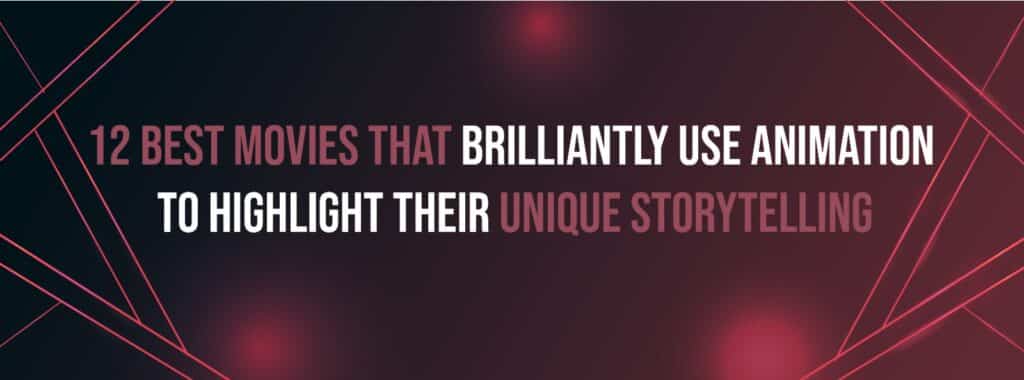
Animation is more than just eye candy. In 2025, it has evolved into a compelling storytelling tool, breathing life into narratives in ways live-action cinema often can’t. From emotion-packed scenes to breathtaking worlds, animation is now being recognized not only for its artistic brilliance but also for its contribution to narrative depth. The following films are some of the best animated movies of all time, not just because of how they look, but how they tell stories. Whether you’re a filmmaker, animator, or simply a lover of cinema, these 12 films stand out for their originality, creativity, and emotional impact. They are top animation movies with unique storytelling, combining technical excellence with human emotion. Let’s take a closer look at the award-winning animated films and iconic animated films with powerful narratives that pushed boundaries in 2025. 1. The Memory Atlas (2025) This indie marvel wowed global audiences with its poetic depiction of memory and loss. The animation style mirrors watercolor paintings that subtly fade as characters lose or reclaim memories. It’s a masterpiece in how animation enhances storytelling in movies, using visual metaphors to reflect emotional states. Why it stands out: The interplay between visual fading and narrative deterioration is unforgettable. 2. Lunar Symphony (2024) Though released late last year, Lunar Symphony gained international acclaim in 2025. Set on a post-apocalyptic moon base, it follows a blind composer using sound waves to navigate and record memories. Its minimalist, grayscale animation style gives focus to its soundtrack. Best storytelling techniques in animation come to life here through audio-driven direction and non-verbal cues. 3. Echoes of Childhood (2025) A semi-autobiographical tale from a renowned Japanese animator, this film uses mixed 2D and 3D elements to explore the parallel worlds of past trauma and present healing. It’s one of the most critically acclaimed animated movies for its raw emotional depth and multi-layered plot. Must-watch animated movie for anyone interested in animation that reflects the psychology of its characters. 4. Solaris Reimagined (2025) A bold reinterpretation of the sci-fi classic “Solaris,” this film embraces cel-shaded animation with surreal, shape-shifting environments to symbolize emotional volatility. It’s both cerebral and visually daring. A shining example of how animation enhances storytelling in movies, especially in philosophical or abstract narratives. 5. Bitworld (2025) Created by a leading tech studio, Bitworld tells the story of a rogue AI within a virtual reality game. Its animation flips between 8-bit pixel art and hyper-real 3D rendering depending on the AI’s emotional state. It’s one of the top animation movies with unique storytelling for how it uses visual contrast to narrate dual realities. 6. Threads of Fate (2025) Inspired by various mythologies, this film weaves cultural folklore from around the globe. Using thread-based stop motion animation, it intertwines stories from Asia, Africa, and Latin America. Best storytelling techniques in animation are found in how cultures are visually represented with fiber art and textile symbolism. 7. The Glass Fox (2025) This noir-inspired animated feature combines moody jazz music with monochrome sketch-style visuals. Following a detective fox in a city of mirrors, it’s filled with symbolism, plot twists, and emotional maturity. One of the most iconic animated films with powerful narratives to come out of the mystery genre. 8. Featherlight (2025) Featherlight follows a migratory bird who questions his purpose. The world-building here is striking—environments adapt depending on the protagonist’s emotional shifts. The film blends traditional animation with procedural generative art. A top choice in the list of must-watch animated movies for its originality and visual dynamism. 9. The Wind Traders (2025) Set in a floating city powered by wind spirits, this adventure film is a coming-of-age tale with environmental undertones. It uses airbrush-style animation to evoke a dreamy, nostalgic aesthetic. Among the best animated movies of all time for its environmental message and allegorical structure. 10. Umbra (2025) A metaphysical journey through a dreamscape where shadows come to life. Umbra plays with negative space, using darkness as a character. This daring film explores grief, self-acceptance, and identity. It’s a trailblazer in best storytelling techniques in animation, using abstract visuals to convey complex emotion. 11. PixeLore (2025) PixeLore is a musical fantasy film that merges glitch art with classic musical theater style. Characters sing in pixelated patterns, blending music and design in unusual ways. Its choreography is literally coded into the scene transitions. An unforgettable entry in the top animation movies with unique storytelling that defies traditional formats. 12. Whispering Wild (2025) Set in a forest inhabited by invisible spirits, this film uses LIDAR-inspired point-cloud animation to create a ghostly atmosphere. It explores themes of deforestation and forgotten rituals. This is a critically acclaimed animated movie that proves animation can be a powerful medium for activism and cultural preservation. What Makes These Animated Films Special in 2025? 1. Narrative Innovation Each of these films introduces fresh storytelling devices, whether through visual metaphors, cultural mythology, or experimental sound design. 2. Visual Symbolism The films don’t just animate—they illustrate meaning. From thread-based visuals to negative space, each artistic choice is deeply narrative. 3. Genre Diversity These films span sci-fi, mystery, drama, fantasy, and even musical comedy. The diversity of tone and genre proves that animation can do it all. 4. Emotionally Rich Characters From blind composers to existential birds, these characters are fully fleshed out and evoke deep empathy. They stand shoulder to shoulder with the best in live-action cinema. 5. Technical Innovation Advanced rendering engines, AI-assisted animation, and VR tools in 2025 allow these films to push the boundaries of the medium. Animation as a Tool for Emotional and Narrative Depth These films are more than just entertainment. They highlight how animation enhances storytelling in movies, often doing what live-action simply cannot. A few key advantages include: This is why the most award-winning animated films of recent years are praised not only for visual quality but for narrative depth. SaaS and Streaming Influence on Animated Films Interestingly, several of the films listed here originated from streaming-first platforms or SaaS-based animation studios. New tools have
The Ultimate Guide to Character Concept Art: 16 Jaw-Dropping Examples to Inspire You in 2025
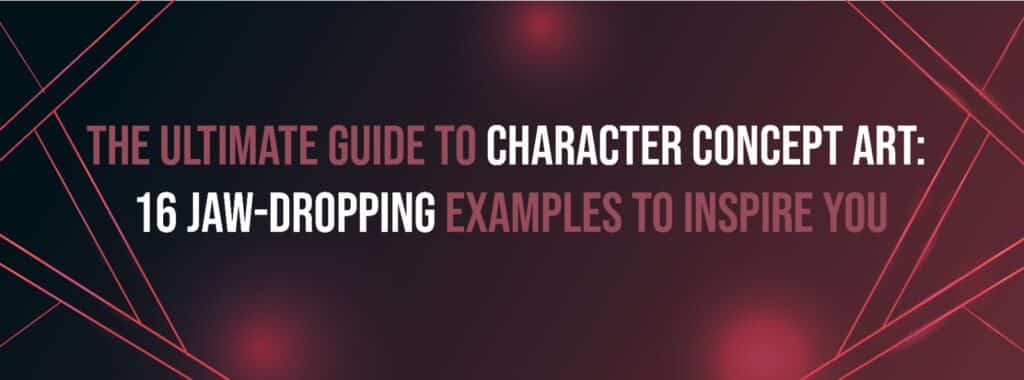
In the evolving world of animation, gaming, and visual storytelling, few elements are as captivating as a well-designed character. Characters bring life, emotion, and narrative depth to every project, whether it’s a blockbuster video game, a short animation, or a fantasy graphic novel. In 2025, the demand for unique, visually compelling, and emotionally resonant character design has reached an all-time high. This ultimate guide breaks down everything you need to know—from how to create character concept art to exploring 16 of the best character concept art examples of the year. We also delve into workflows, tools, techniques, and tips from top industry professionals. Whether you’re a beginner or a pro artist, these insights and examples will ignite your creativity and elevate your skills. What Is Character Concept Art? Character concept art is the process of visualizing and developing a character’s appearance, personality, and style for animation, video games, films, and more. Artists sketch multiple versions of a character—exploring poses, expressions, outfits, and accessories—to align with the story’s tone and world-building. Strong character concept art creates an emotional connection with the viewer and guides 3D modelers, animators, and writers throughout the production pipeline. Why Character Concept Art Matters in 2025 With advancements in technology like AI-enhanced workflows and ultra-detailed rendering engines, concept artists now have more tools than ever. However, the soul of character design still lies in storytelling, silhouette, and originality. From triple-A games to indie animations, character design inspiration drives audience engagement and sets the tone for entire universes. Step-by-Step Guide to Character Concept Art Mastering the step-by-step guide to character concept art can help you develop a structured workflow: 1. Character Brief or Story Background 2. Silhouette Exploration 3. Facial Features and Expressions 4. Costume and Accessories 5. Color and Materials 6. Final Rendering Top Tools and Software Used in 2025 Here are some go-to platforms and tools that concept artists swear by: Top 16 Best Character Concept Art Examples in 2025 We’ve curated a list of best character concept art examples that blew minds in 2025—from fantasy elves to sci-fi rebels and mythical creatures. 1. Vera the Void Witch by Kaan Ulgener 2. Astra-13, The Cyber Mechanic by Lois van Baarle 3. Eron, Spirit Guardian by Even Amundsen 4. Dr. Mekro, Steampunk Surgeon by Hicham Habchi 5. Yuto, Neon Ronin by Wlop 6. Mara, Desert Nomad by Claire Wendling 7. R3X, Battle Droid from Void War 8. Elena the Wind Tamer by Sam Yang (Samdoesarts) 9. Kalida, Jungle Huntress by Jama Jurabaev 10. Kael, Time Thief by Ahmed Aldoori 11. Noxara, Shadow Queen by Tooth Wu 12. Ignis the Fireborn by Zeronis 13. Milo & Pock, Inventor and Sidekick by Max Ulichney 14. Ayaka, Spirit Dancer by Atey Ghailan 15. Thorne, The Undying Paladin by Karla Ortiz 16. Oro, The Bioluminescent Deep Diver by Feng Zhu These examples provide a masterclass in structure, color theory, silhouette, and emotion. Character Concept Art Tips for Beginners If you’re starting your journey, here are some essential character concept art tips for beginners: 1. Start with Research Look up references, cultures, animals, fashion, and other design sources that match your theme. 2. Use Moodboards Organize your inspirations in one visual space for tone, lighting, and mood consistency. 3. Understand Anatomy Even exaggerated designs need foundational anatomy. Study proportions and poses. 4. Practice Line Confidence Work on making deliberate, bold lines during sketching. 5. Iterate Often Create multiple versions before locking a design. Experiment with silhouettes and accessories. 6. Learn From the Best Study top concept artists and their work—mimic, analyze, and then create your own version. 7. Get Feedback Join online communities like ArtStation, DeviantArt, or Reddit to get critiques. 8. Stay Consistent Daily practice with challenges like “Draw This In Your Style” helps build skills and style. Top Concept Artists and Their Work in 2025 Explore work from some of the world’s top concept artists and their work for more in-depth inspiration: Follow them on ArtStation and Instagram for real-time inspiration. Final Thoughts In 2025, the boundaries between art, animation, gaming, and storytelling are more blurred than ever. Whether you’re designing a protagonist for a AAA game or building a background character for an indie film, great character concept art brings vision to life. By exploring these best character concept art examples, you gain deeper insights into what makes a design impactful. From silhouettes to costume details and expression to lighting, everything in a character contributes to narrative strength. Use this guide, explore how to create character concept art, and refer back to the step-by-step guide to character concept art whenever you’re stuck. Combine that with learning from top concept artists and their work, practicing digital painting techniques for concept artists, and applying our character concept art tips for beginners. With consistency, creativity, and a passion for characters, you’ll be creating your own masterpiece in no time. However, mastering character concept art is no simple task it demands exceptional dedication and boundless creativity. Are you struggling to design your superhero or aspiring to create a character destined to win hearts? Look no further. Animotions Studio stands at the forefront of the 2D and 3D entertainment industry, ready to bring your vision to life. With our expertise, you can unlock the true potential of your ideas, ensuring your characters not only captivate audiences but also leave a lasting legacy in the world of animation. Frequently Asked Questions (FAQ’s) What is the Difference Between Concept Art and Character Design? Concept Art: is a broad field that encompasses a range of visual designs for various aspects of a project, including environments, objects, and characters. Its primary goal is to visually communicate ideas and themes for a project, serving as a blueprint for further development. Concept art can include sketches, paintings, and 3D models that depict the overall aesthetic and mood of a project. Character Design: on the other hand, is a specialized subset of concept art focused specifically on the creation and visualization of characters. This involves designing their physical appearance, clothing,
Top 12 Best Anime Streaming Websites to Download Anime Stream Free & Paid Options for [2025]
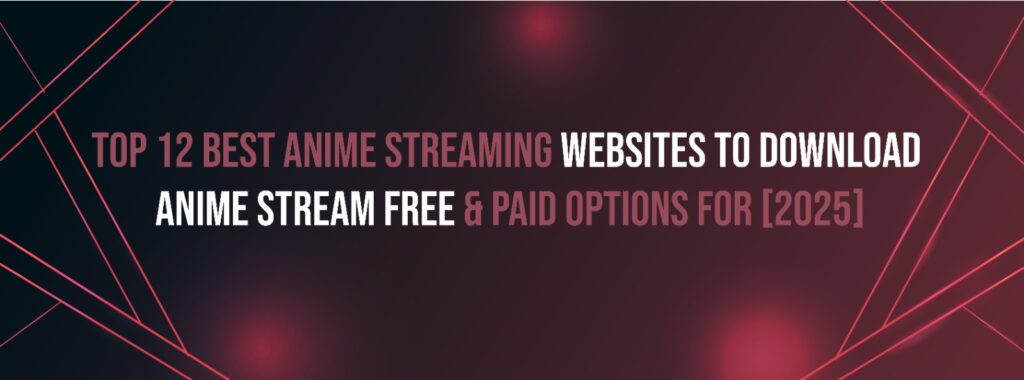
Looking for the best anime streaming websites to download Anime streams? Check out our curated list of the top 12 platforms, featuring both free and paid options. From classic series to the latest releases, these websites offer extensive libraries, high-definition streaming, and user-friendly interfaces. Whether you’re a casual viewer or a hardcore fan, you’ll find the perfect site to satisfy your anime cravings. Dive into engaging stories and stunning visuals while enjoying access to your favorite shows. Start your anime show journey today. Experience your passion for anime with reliable streaming that fits your lifestyle! Explore diverse genres, from action-packed adventures to heartwarming romances. Enjoy exclusive content and never miss an episode of your beloved series. What is Anime? Anime, a unique blend of hand-drawn and computer-generated animation originating from Japan, represents a distinct style of animation that has gained global popularity. This genre has engaged over a billion viewers worldwide, making it a prominent force in the television landscape. The anime industry is experiencing remarkable growth, drawing attention for its diverse types of storytelling, art styles, and musical compositions. Its immense popularity can be attributed to its rich narratives filled with action, suspense, adventure, love, and romance, appealing to a wide range of audiences. Beyond its engaging plots, anime often explores complex themes, touching on philosophical questions and emotional experiences that resonate with viewers of all ages. This depth allows fans to connect with characters on a personal level, fostering a strong sense of community among enthusiasts. Furthermore, the vibrant and visually striking animation styles showcase the incredible talent of animation artists and animators, pushing the boundaries of creativity. As a result, anime continues to inspire and influence various forms of media, solidifying its status as a cultural phenomenon. Why is it so popular? Anime is a distinctly Japanese art form that has engaged audiences worldwide. Fans often seek out collections of VHS tapes featuring martial arts heroes with spiky hair, enchanting magical girls, and epic tales of planetary invasions. Much like Marvel comics, The Lord of the Rings, and Star Trek, anime has established itself as a mainstream entertainment genre. Iconic productions such as Your Name and the works of Hayao Miyazaki’s Studio Ghibli, alongside blockbuster action series like Dragon Ball and Jujutsu Kaisen, showcase the diversity and creativity within the medium. With the advancement of technology, anime streaming platforms, including Netflix and Amazon Prime, have emerged, making it easier than ever for viewers to access their favorite shows and films. In the past, anime was primarily available to Japanese audiences, but today, it has found a global home on various streaming services, improving the anime-watching experience for fans everywhere. However, finding reliable websites to stream or download anime can still be a challenge for fans. Many sites fall short in providing high-quality animated content, often proving to be unreliable or even harboring viruses. Fortunately, a select few anime video downloaders and streaming sites allow users to enjoy anime videos online for free in HD. There is a wide range of both free and paid anime streaming providers available to meet the needs of enthusiasts. As anime continues to evolve, the community of passionate fans grows, united by their love for this dynamic storytelling medium and animated movies. This vibrant culture encourages discussions, fan art, and even cosplay, enriching the overall experience. In this exciting landscape, anime remains not just a form of entertainment but a global phenomenon that inspires creativity and connection. What is the Difference Between Anime and Manga? Anime and manga are two distinct forms of Japanese popular culture, but they are often closely associated with each other. The main difference between anime and manga is the medium in which they are produced and consumed. Anime is an animated form of entertainment, while manga is a printed or digital comic. However, many anime shows and movies are based on manga series, and anime adaptations are often very popular in Japan and around the world. Both anime and manga are important parts of Japanese popular culture and have a large and dedicated following. Anime is Japanese animation of stories that are often based on manga, so it tends to have similar stylistic aspects to manga though in full color and featuring great voice actors. Anime refers to animated works that are typically produced in the form of television series, movies, and original video animations. It is characterized by its distinctive visual style and complex narratives and is typically aimed at a wide range of audiences, including children and adults. Manga refers to Japanese comics and graphic novels. While the manga has similarities to American comics, some stylistic aspects distinguish them, such as bigger eyes on characters and more speed lines in action scenes, and they are typically done in black-and-white, with lots of cool visual sound effects. Manga is typically produced in serialized form and is read in right-to-left format. Manga covers a wide range of themes and genres, including action, romance, science fiction, and fantasy, and is enjoyed by readers of all ages. Top 6 Anime Streaming Websites to Download Anime Free Discover the top 6 anime streaming websites where you can download your favorite series and films for free. These platforms offer a wide variety of genres, ensuring every anime enthusiast finds something to enjoy. With user-friendly interfaces and high-quality video options, watching and downloading anime has never been easier. Explore engaging anime animated movies and shows without spending a dime. Perfect for both seasoned fans and newcomers, these sites provide an accessible gateway into the world of anime. 1. ANIMIXPLAY: Source: ANIMIXPLAY Animixplay has earned its spot among the top platforms for anime, offering an extensive selection of high-quality anime movies and convenient downloading options all for free. The site features wide types of original Japanese anime and English dubbed versions, both available for high-definition streaming and downloads. Users can enjoy content without needing to sign up or provide any personal information, ensuring a hassle-free experience free from ads and malware. Upon entering
List of Top 8 Animation Outsourcing Companies 2025
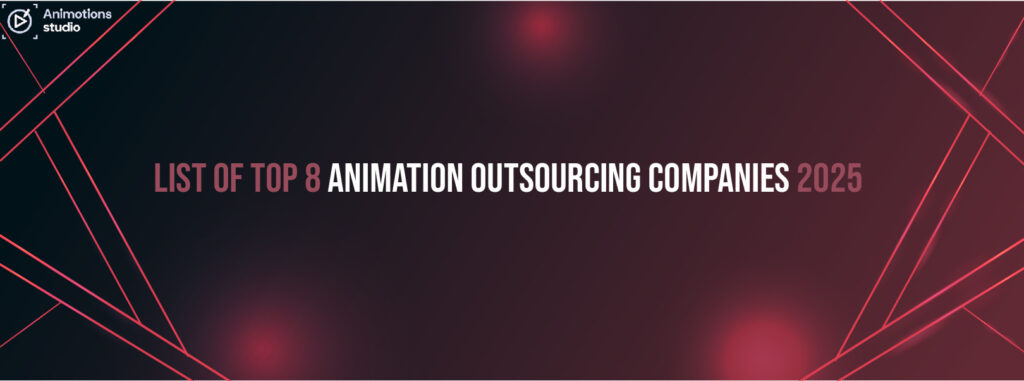
The field of animation outsourcing has experienced significant growth as companies aim to lower production costs and streamline their projects. From the beloved hand-drawn characters of the past to the intricately detailed hyper-realistic 3D environments of today, animation has evolved dramatically in both technique and its impact. Animation outsourcing studios provide access to a variety of animation styles, specialized knowledge, and the flexibility to adjust production levels according to the needs of various industries. In this blog post, we’ve compiled a list of leading animation outsourcing companies, highlighting their diverse services and pricing structures across different locations. If you’re seeking a company to handle your animation project, continue reading to make an informed decision. Discover how outsourcing can enhance your creative potential while saving time and resources. Each studio listed brings unique strengths to the table, ensuring you find the perfect fit for your vision. Whether you need captivating explainer videos or engaging animated series, our curated selection has got you covered. Leap into the world of professional animation outsourcing and take your project to new heights! What is Animation Outsourcing? Animation Outsourcing refers to the practice of hiring external companies or freelancers to handle various aspects of animation production instead of relying solely on an in-house team. This approach allows studios and businesses to access specialized skills, reduce costs, and meet tight deadlines. Key aspects of animation outsourcing include: What are the Benefits of a 3d & 2d Animation Outsourcing Company? Benefits of a 3D & 2D Animation Outsourcing Company: Outsourcing your 3D & 2D animation projects to a specialized company can offer numerous advantages that can enhance your business’s efficiency, creativity, and overall success. Here are some key benefits: Top 8 Animation Outsourcing Companies Explore the top eight animation outsourcing companies known for delivering high-quality visual content. These studios offer diverse services, including 2D and 3D animation, motion graphics, and more. Leveraging global talent, they provide cost-effective solutions tailored to various project needs. Partnering with these experts can elevate your animation projects and enhance your creative output. 1. Animotions Studio: Animotions Studios: Your Partner in High-Quality Animation Production Animotions Studios is a leading animation outsourcing company dedicated to delivering exceptional animation services. Their offerings include a diverse range of projects, such as animation for kids, commercials, explainer videos, game trailers, cinematics, series, feature films, as well as character, environment, and prop animation. What sets Animotions Studio apart from other animation houses is not just their technical and artistic expertise, but also the extensive range of services they provide and their comprehensive production pipeline from concept development to final rendering. As an award-winning 3D animation studio, Animotions Studio prides itself on close collaboration with clients and efficient communication. This approach ensures that every project meets its specific requirements, whether it involves stylized or realistic animations. Animotions Studio will support you throughout the animation production process, guiding you from concept and modeling to animation and rendering. Why Choose Animotions Studio? 2. Yans Media: Yans Media: Your Comprehensive Animation and Explainer Video Partner Yans Media specializes in providing a wide array of services for both animation and explainer videos. They manage every aspect of the animation production process, from concept and story creation to scriptwriting, storyboarding, style and visual design, voiceover and sound design, as well as finalization and polishing. Whether you need assistance with specific steps or a complete production solution from start to finish, Yans Media is here to support you. They offer various types of animation, including 2D, 3D, motion graphics, and explainer videos. Their payment structure is straightforward, requiring half of the payment upfront and the remaining half upon project completion. Why Choose Yans Media? 3. Motionstory: Motionstory: Your Premier 2D and 3D Animation Outsourcing Agency Motionstory is a dedicated 2D and 3D outsourcing agency that offers a comprehensive range of services from concept development to final delivery. Their 3D animation pipeline and motion graphics production process encompass the following key steps: Every story they craft reflects a unique and creative collaboration, ensuring that each project is both distinct and compelling. With a commitment to quality and innovation, Motionstory transforms ideas into engaging visual narratives that resonate with audiences. Let them bring your vision to life with their expert animation solutions. 4. Explain Ninja: Explain Ninja: Your Go-To Polish Animation Service Provider Explain Ninja is a renowned Polish company specializing in a range of services, including scriptwriting, storyboarding, illustrations, and voiceover for animated videos. Their extensive portfolio highlights their expertise and experience in delivering top-notch animation services. They offer various styles, including hand-created, flat drawing, minimalism, outlining, and more, allowing clients to choose the aesthetic that best fits their vision. To cater to diverse needs, Explain Ninja provides five distinct packages tailored for different purposes: With these options, clients can find the perfect fit for their project requirements. Experience the power of engaging storytelling with Explain Ninja, where creativity meets professionalism! 5. Wow-How: Wow-How: Your Trusted Partner for 2D and 3D Video Outsourcing Services Wow-How offers a wide type of 2D and 3D video outsourcing services, including explainer videos, promotional content, educational materials, crowdfunding campaigns, corporate videos, advertising reels, and animated series. Their diverse portfolio showcases their ability to collaborate with both leading corporations and innovative startups. In addition to their standard services, they provide specialized 3D offerings, including 3D modeling, 3D texturing, and CAD to 3D conversions. Notable Clients Include: With Wow-How, you can trust that your project is in capable hands, delivering quality and creativity every step of the way. create your brand’s story with Wow-How, where imagination meets innovation! 6. BuzzFlick: BuzzFlick: Your Innovative Animation Service Agency BuzzFlick is a cutting-edge agency specializing in a variety of animation services, including 2D, 3D animation, motion graphics, whiteboard animations, and 3D modeling. They cater to a wide range of video types, from explainer and promotional videos to demo videos and advertisements. With solutions tailored for various use cases and industries, BuzzFlick ensures that your vision comes to life. Whether you need eye-catching visuals to engage
The Impact of AI on Techniques and Innovations in the 2D/3D Animation Industry

The animation industry has undergone a radical transformation over the last few years, and in 2025, the revolution has reached a new peak. With the infusion of artificial intelligence (AI), both 2D and 3D animation workflows are being streamlined, accelerated, and enhanced beyond traditional limitations. From storyboarding to final rendering, AI in animation industry 2025 is not just assisting creators—it’s redefining the entire production pipeline. Animation, long known for its labor-intensive nature, now benefits from AI’s unmatched capacity to analyze, automate, and improve creative processes. In this article, we’ll explore how AI is transforming 2D and 3D animation, the tools driving the change, and the groundbreaking innovations emerging from this synergy. The Role of AI in Animation Industry 2025 AI has transitioned from a helpful tool to a core component of animation pipelines. Major studios, indie creators, game developers, and marketing agencies now use AI-powered software to: The benefits of AI in the animation industry extend far beyond speed. It introduces scalability, accessibility, and customization to a field once limited by time and manpower. How AI Is Transforming 2D and 3D Animation 1. Procedural Animation and Motion Capture Enhancement Traditional animation often relies on frame-by-frame artistry, especially in 2D. In 2025, AI-driven animation techniques and innovations use procedural animation to fill in frames intelligently. AI tools now analyze motion data and replicate natural movement patterns. In 3D, AI enhances motion capture accuracy, fixing jitters and generating clean skeletal rigs without manual adjustments. This cuts down hours—if not days—of post-processing. 2. Intelligent Inbetweening in 2D For decades, inbetweening was a time-consuming task requiring animators to draw frames between two key positions. Now, with AI-powered animation tools and software, animators only need to define key poses. The AI fills in smooth, context-aware inbetweens that understand physics and character expressions. 3. Automated Lip Syncing and Voice Integration AI’s advancement in natural language processing has enabled realistic lip-syncing engines. These tools analyze speech audio and automatically animate a character’s mouth to match phonemes with high precision. Voice assistants within animation tools now take commands like “make this character smile after the punchline”—simplifying complex tasks. 4. Real-Time Rendering and Asset Generation Rendering used to be the bottleneck of animation production. Today, AI-based render engines significantly reduce render times while improving lighting and textures. Procedural 3D asset generators now use generative AI to create props, backgrounds, and landscapes with minimal input. Key AI-Powered Animation Tools and Software in 2025 Let’s look at some of the top AI-powered animation tools and software that are transforming the industry: 1. Runway ML Runway’s AI animation suite provides real-time background generation, keyframe interpolation, and motion stylization for 2D/3D workflows. 2. Adobe Firefly + Animate Adobe has integrated generative AI across its suite. Firefly allows designers to generate backgrounds, characters, and movements, while Animate automates frame transitions using AI. 3. Cascadeur A physics-based animation tool that uses machine learning in 3D animation to help artists pose characters, apply physics-based constraints, and create realistic movement. 4. DeepMotion An AI-driven motion capture solution that allows creators to animate characters directly from videos using body and facial tracking. 5. Ebsynth (with AI plugins) Transforms video into stylized 2D animations using AI frame mapping and style transfer. These tools highlight the seamless integration of machine learning and creative direction in animation. The Future of AI in Animation Production Looking forward, the future of AI in animation production includes more than just automation. Here are the directions it’s headed: 1. Voice-to-Scene Creation AI is moving toward interpreting full voice commands and scripts to create animated scenes. Imagine narrating a scene and watching it come alive in real-time. 2. Virtual Animation Assistants Intelligent design bots will soon act as team members, suggesting improvements, managing assets, and maintaining consistency across animation projects. 3. Personalized Animated Content Brands and creators will use AI to deliver personalized animations tailored to individual user data (e.g., character likeness, voice preferences, regional themes). 4. Cross-Platform Deployment AI will allow seamless conversion between 2D and 3D formats, and between animation formats for web, games, AR/VR, and film—all optimized automatically. AI-Driven Animation Techniques and Innovations The most exciting aspect of AI in animation is the innovation it unlocks. Let’s explore the most noteworthy AI-driven animation techniques and innovations that define 2025: 1. Neural Style Transfer for 2D Animation Creators can now apply Van Gogh’s or Studio Ghibli’s style across an entire 2D animation sequence using neural networks. The style remains consistent across frames, eliminating manual touch-ups. 2. Generative Character Design AI-based design assistants offer character suggestions based on story genre, mood, or cultural aesthetics. Artists then refine the AI’s outputs. 3. Behavioral AI for NPCs In games and animated simulations, characters respond dynamically using AI. NPCs can now emote, react, and interact based on user input—making the experience more immersive. 4. AI-Assisted Choreography AI can analyze dance or movement sequences and apply them to animated characters, matching rhythm and expression. Perfect for music videos or cinematic sequences. 5. AI in AR and VR Animation In immersive media, AI helps animate interactions between the user and the environment. Scene changes, object transformations, and character responses are all dynamically AI-generated. Machine Learning in 3D Animation The impact of machine learning in 3D animation cannot be overstated. Algorithms now learn from thousands of animation frames to: This reduces the need for expensive simulations and shortens the production timeline drastically. Benefits of AI in the Animation Industry The benefits of AI in the animation industry go beyond just technical enhancements. Here’s how it’s shaping the future: 1. Accessibility for Beginners AI enables creators with little to no experience in animation to create professional-quality content. Templates, smart tools, and training models act as digital mentors. 2. Faster Production Timelines AI cuts down pre-production, animation, and post-production cycles by up to 60%, accelerating content delivery for marketing, entertainment, and education. 3. Cost Efficiency Studios no longer require large teams for repetitive tasks like lip-syncing or background generation. AI handles these, saving budgets for core creative work. 4. Cross-Cultural Localization AI-driven
What is 3D Animation? An In-Depth Exploration of Digital Artistry and Creative Techniques in 2025
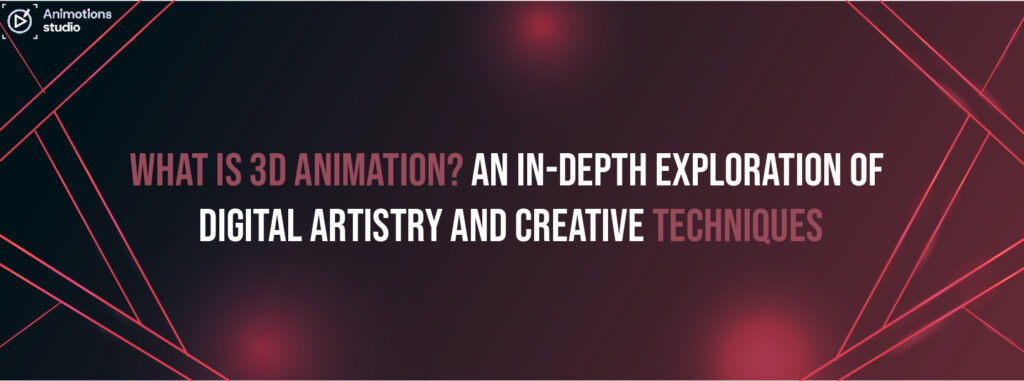
3D animation has evolved into a core component of digital storytelling, marketing, game development, and entertainment in 2025. With immersive visuals, lifelike movements, and limitless creative potential, it’s no wonder this artistic discipline continues to reshape industries. Whether you’re new to the medium or a seasoned creator, this guide will break down what is 3D animation and how does it work, highlight 3D animation techniques for beginners, and explore the most influential tools, trends, and opportunities. What is 3D Animation and How Does It Work? 3D animation is the process of creating moving images in a three-dimensional digital environment. Unlike traditional 2D animation, where elements are flat, 3D animation adds depth, realism, and perspective by modeling characters and environments with height, width, and depth. At its core, the process involves three major stages: These elements come together to simulate realistic motion or stylized visuals for applications in film, games, advertising, and more. A Brief History of 3D Animation 3D animation traces its roots back to the 1960s with experimental wireframe models. The major breakthrough came in the 1990s with films like Toy Story (1995), the first fully 3D-animated feature film. Since then, it has become an industry standard in gaming, movies, and marketing. Fast forward to 2025, and 3D animation is powered by AI-assisted tools, real-time rendering engines, and cloud-based collaboration. 3D Animation Techniques for Beginners Learning to animate in 3D may seem intimidating, but with the right approach, beginners can create impressive results. Here are essential 3D animation techniques for beginners: 1. Keyframing The foundation of all animation. You define important frames (keyframes), and the software interpolates movement between them. 2. Timeline Editing Understanding the timeline allows you to adjust timing and sequence for smoother motion. 3. Graph Editor Use Fine-tuning animations by adjusting curves that represent speed and easing. 4. Basic Rigging Adding bones to characters and connecting them to joints for movement. 5. Camera Animation Learn to animate the camera for dramatic shots or cinematic effects. Start small. A bouncing ball or waving character is a great way to practice and apply these techniques. How to Create 3D Animations Step by Step Let’s walk through how to create 3D animations step by step: Step 1: Concept and Storyboarding Outline your story or idea. Create a simple storyboard to visualize the flow. Step 2: Modeling Use a 3D modeling tool to create characters, objects, and environments. Step 3: Rigging Add a skeletal structure to models so they can move. Rigs allow flexibility and reusability. Step 4: Animation Using keyframes and motion paths, animate your characters and scenes. Step 5: Lighting and Texturing Add light sources, shadows, and surface materials to make the scene realistic or stylized. Step 6: Rendering Render your animation into frames or video format using tools like Cycles (Blender) or Arnold (Maya). Step 7: Post-Production Edit the footage in tools like After Effects or Premiere to add sound, effects, and transitions. Best Software for 3D Animation Choosing the best software for 3D animation depends on your goals, budget, and learning curve. Here are the top contenders in 2025: 1. Blender 2. Autodesk Maya 3. Cinema 4D 4. Unreal Engine 5 5. ZBrush (for modeling) 3D Animation vs 2D Animation Comparison Let’s dive into a 3D animation vs 2D animation comparison to highlight key differences: Aspect 2D Animation 3D Animation Depth & Perspective Flat and stylized Realistic depth and dimension Tools Used Toon Boom, Adobe Animate Blender, Maya, Cinema 4D Learning Curve Easier for beginners Requires more technical skill Use Cases Cartoons, explainer videos Films, games, product visualization Animation Method Frame-by-frame or tweening Rigged skeletal animation Both styles are valuable and can be blended for unique hybrid animations. 3D Animation in Movies and Gaming The role of 3D animation in movies and gaming has reached new heights in 2025: Movies: Games: In both industries, 3D animation boosts realism, interactivity, and emotional storytelling. Career Opportunities in 3D Animation The demand for 3D animators is stronger than ever in 2025. Here are popular career opportunities in 3D animation: 1. Character Animator Bring characters to life for films, games, and commercials. 2. 3D Generalist Handle all aspects of the pipeline: modeling, texturing, rigging, animation. 3. Environment Artist Build realistic or stylized worlds for movies or games. 4. VFX Animator Create special effects like explosions, weather, and water using simulation tools. 5. Game Animator Work with real-time engines to animate gameplay mechanics and cinematics. 6. Product Visualization Artist Create animated prototypes or walkthroughs for products and architecture. 7. AR/VR Animator Design content for immersive environments using 3D animation. Salary ranges vary by expertise, location, and industry, but average entry-level salaries in 2025 hover around $60,000 USD and go upwards of $150,000+ for senior-level roles. Top Trends in 3D Animation Industry Here are key top trends in 3D animation industry shaping 2025: 1. AI-Powered Animation Tools AI now assists in in-betweening, lip sync, and motion generation, saving time and improving quality. 2. Real-Time Animation & Virtual Production Studios like Disney and Netflix use Unreal Engine for on-set virtual environments. 3. Cloud-Based Collaboration Remote teams collaborate seamlessly using cloud rendering and asset sharing. 4. Stylized 3D Blending 2D aesthetics with 3D workflows (e.g., Spider-Verse style). 5. Procedural Animation Automatically generated animation using algorithms (e.g., crowd simulation, natural movement). 6. 3D for AR/VR 3D animation powers educational, gaming, and e-commerce AR/VR experiences. Benefits of Learning 3D Animation in 2025 Here are reasons why learning 3D animation now is a strategic move: Challenges of 3D Animation While rewarding, 3D animation is not without its challenges: But with the rise of user-friendly platforms, tutorials, and AI assistance, these barriers are slowly decreasing. Recommended Learning Resources (2025) To start or advance your 3D animation journey, consider these: Final Thoughts Understanding what is 3D animation and how does it work is the first step in unlocking your creative potential in this dynamic field. From games to films and product design to AR/VR, 3D animation touches nearly every corner of digital creation. Whether you’re intrigued by 3D
